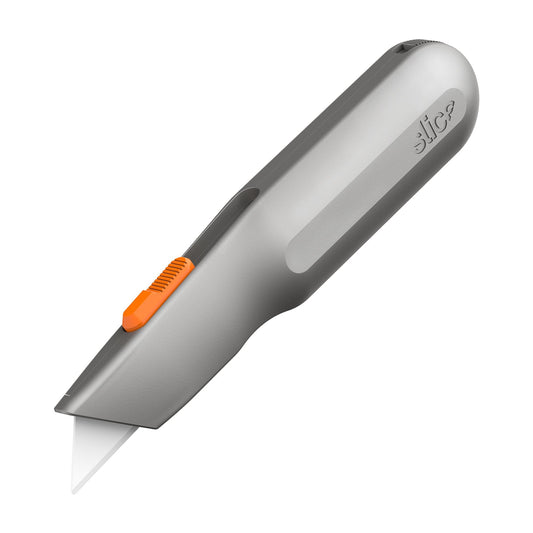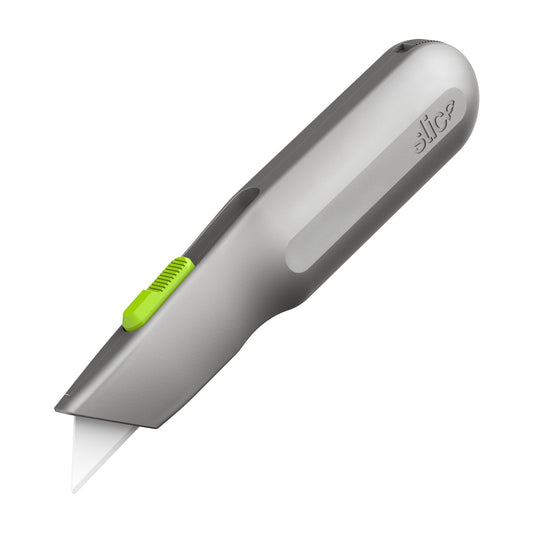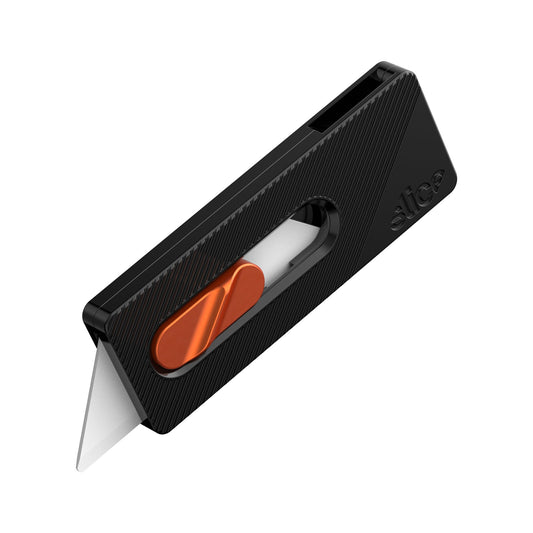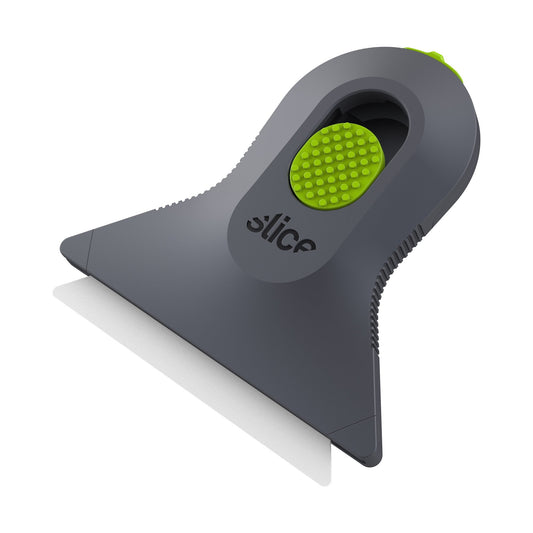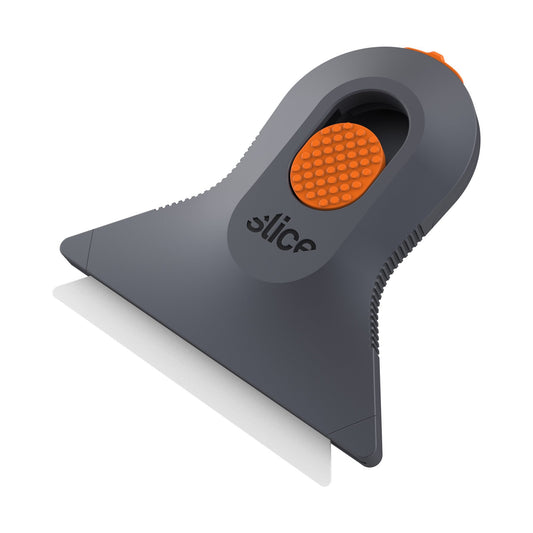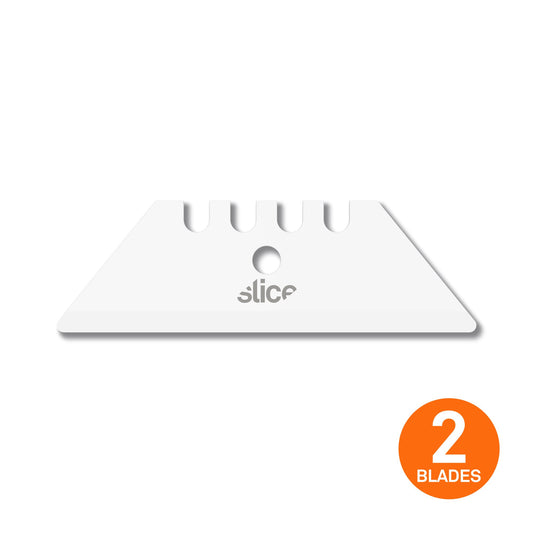SKU #10523
Lame multiuso (seghettate)
Le lame multiuso seghettate 10523 Slice® sono ideali per applicazioni che richiedono un taglio seghettato. Queste robuste lame multiuso durano fino a 11 volte di più di quelle in metallo e tagliano in modo efficace un’ampia gamma di materiali domestici e industriali. Meno sostituzioni della lama significa meno incidenti e un minor tempo di inutilizzo. Le lame 10523, caratterizzate dalla nostra affilatura finger-friendly®, sono sicure al tocco, riducendo drasticamente il rischio di lacerazioni accidentali. Non necessitano di manutenzione, nè di lubrificanti, e non si arrugginiscono mai.
- Tipo di lama: seghettata
- Più sicura delle lame tradizionali
- Affilatura finger-friendly® che taglia in maniera efficace
- Dura fino a 11,2 volte delle lame in metallo
- Meno sostituzioni della lama = meno incidenti
- Riduce gli incidenti, diminuisce i costi
- Non produce scintille, non conduce elettricità, non magnetica
- Chimicamente inerte, non si arrugginisce mai
- Non necessita di lubrificanti
- Non necessita di contenitori per strumenti affilati
- 100 percento riciclabile
- Sicura fino a 1600°C
- Impugnature compatibili: 10479, 10490, 10491, 10493, 10496, 10497, 10582, 10590, 10594
- 2 lame singole per confezione
- SKU# 10523
Product Specifications
Product Specifications
Cutting Depth:
Material: zirconium oxide
Dimensions: L x W x H
Weight: 0.016 kg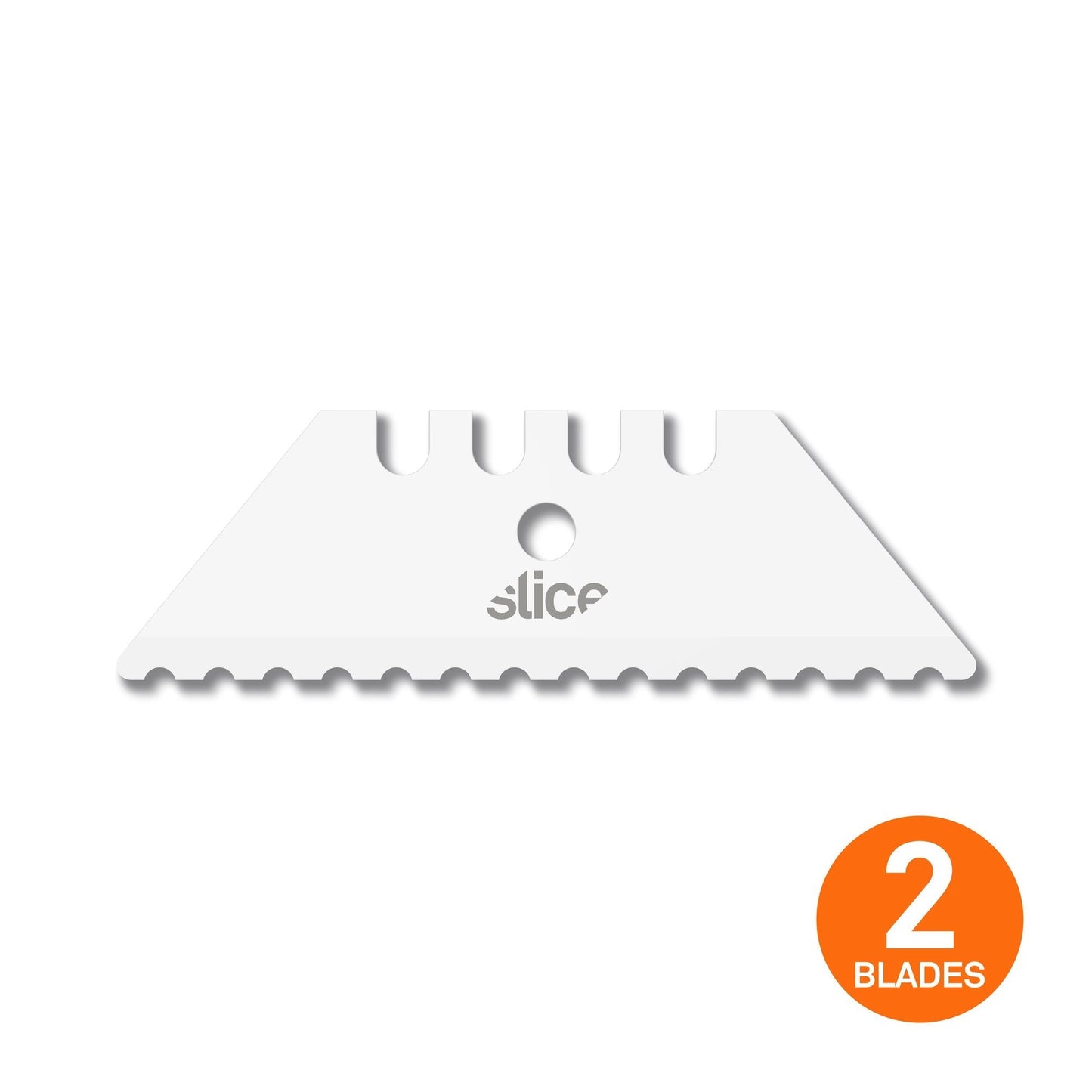
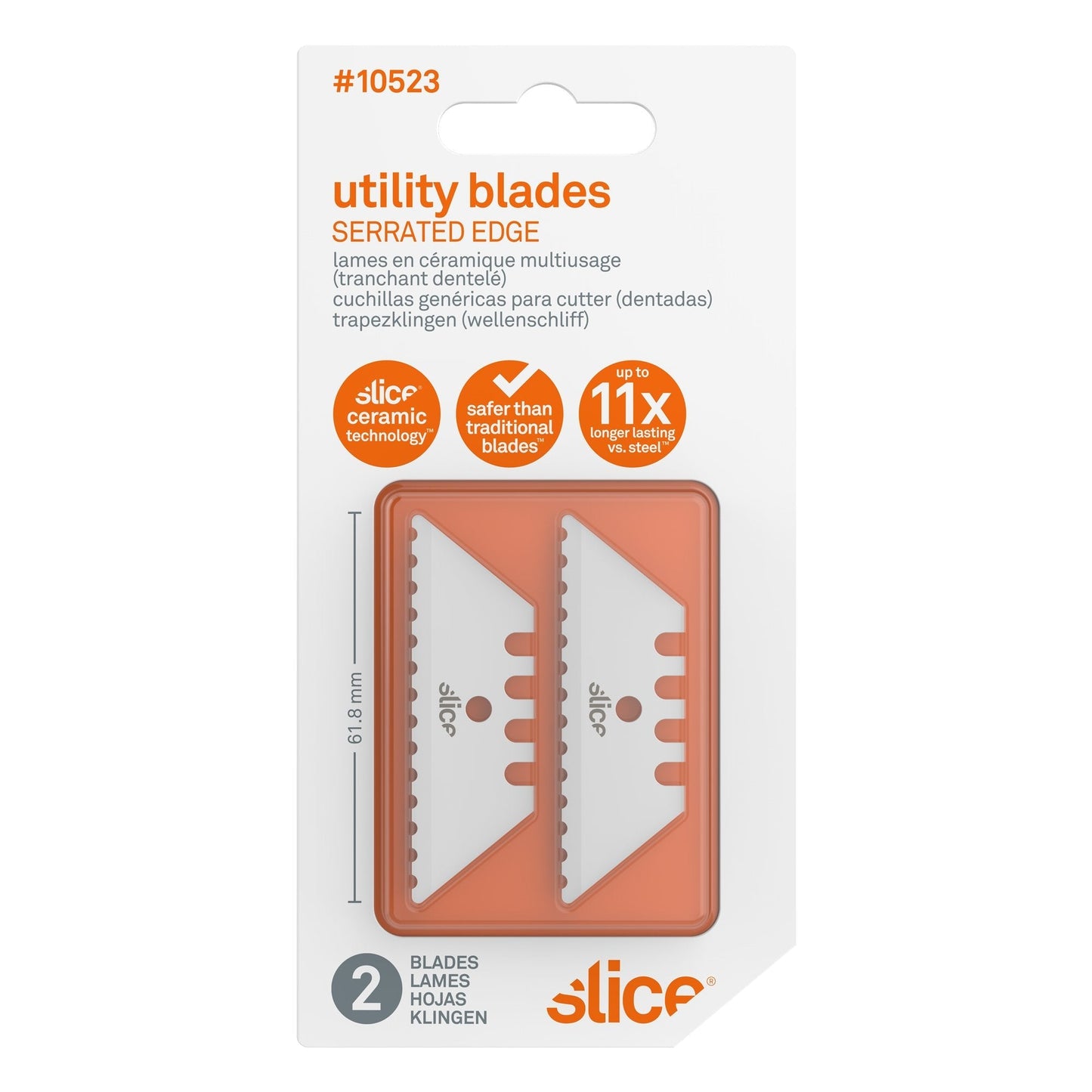

Compatible Products
Videos
-
Blade Replacement on Metal-Handle Utility Knives
-
Blade Replacement on the 10594 Manual Mini Scraper
FAQ
What Can You Use Serrated Utility Knife Blades For?
Serrated utility blades, in contrast to straight-edge blades, are ideal for any application that requires a sawing motion. Typically this includes tough, textured materials that benefit from the penetrating action of the teeth on a serrated edge. These teeth first puncture the exterior then saw through the interior. In the culinary world, the most common example is bread, where the hard crust must be punctured and the soft interior—which would otherwise collapse under the pushing motion of a straight-edge blade—can be sliced with a back-and-forth motion. In the industrial world, examples of materials that benefit from serrated utility knife blades include some types of textured foam and the tough strands that make up twine and rope.
How Are Slice Serrated Utility Blades Safer?
Slice safety blades feature our patent-pending finger-friendly® edge design. This is a proprietary way of grinding the blade with a double edge so that it cuts effectively but remains safe to touch. The double edge decreases the initial cutting zone and disperses the force of the cut across skin’s surface. Any blade can, of course, cut flesh with some effort, but Slice is the only company to manufacture a blade that’s both touchable and effective. Our serrated blades are no exception. Unlike traditional blades, which start out dangerously sharp whether they’re metal or ceramic, our blades start at a safe and sufficient sharpness. In contrast to metal, Slice blades maintain that safe level of sharpness for up to 11 times longer.
Are Slice Blades Breakable?
While ceramic is often considered an exceptionally fragile substance, it’s important to note that Slice blades are made from 100 percent zirconium oxide, an advanced ceramic that is in fact much harder than steel. This is part of the reason (along with our proprietary grind) that our blades last up to 11 times longer than comparable steel blades. It’s important, also, to have proper expectations about how our serrated utility knife blades are meant to be used. Like any other blade, they’re intended to withstand the downward force of slicing or cutting, but are not meant to be subjected to a side load. On occasion, our blade edges sustain microscopic chips (as do all blades), but this won’t affect their ability to cut. Slice blades are not meant to scrape against hard surfaces, like concrete.
How Long Do the Serrated Utility Blades Last?
Slice blades have been tested independently by a third party to determine how they compare with standard steel utility blades. The result was clear: our blades last up to 11.2 times longer than steel. Serrated blades also tend to last longer than straight blades, due to their notched edge; not all areas of the edge absorb the same amount of force as they would on a straight edge.
What Handles Are Compatible With the 10523 Blades?
Slice is committed to continuous innovation and always has several new tools in development. Our utility blades were created in conjunction with a customer to help improve the safety of their manufacturing process. While we found that the blade fit in some third-party handles, they didn’t fit in all. Rather than trying to accommodate a huge number of handles whose manufacture wasn’t in our control, we decided to create handles that were designed, from the ground up, to fit our straight and serrated utility knife blades. Both our manual and auto-retractable metal-handle utility knives are compatible with the Slice 10523, 10524, and 10525 utility blades.
How Do I Dispose of a Slice 10523 Blade?
The unique Slice finger-friendly edge doesn’t require special sharps box disposal, as do dangerously sharp traditional blades. Professional occupational safety experts must, of course, choose safety guidelines for any given workplace, but most do not require sharps box disposal for Slice rounded-tip blades. Our pointed-tip blades have the potential to pierce standard garbage bags, so we encourage companies to evaluate them and make their own determination regarding sharps disposal.
As with all Slice blades, our serrated utility blades are 100 percent recyclable—if no facilities exist in your area, feel free to ship your used blades to Slice’s headquarters in San Jose, California, where we’ll happily recycle them for you.
As with all Slice blades, our serrated utility blades are 100 percent recyclable—if no facilities exist in your area, feel free to ship your used blades to Slice’s headquarters in San Jose, California, where we’ll happily recycle them for you.




